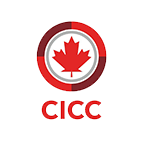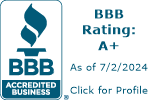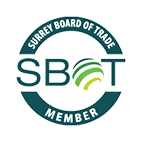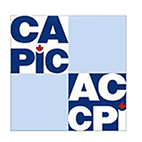To be eligible for Express Entry, you must demonstrate proficiency in English or French, Canada’s official languages. Here’s a comprehensive guide to the language requirements for Express Entry.
Evaluation of the Language Test in Express Entry
The primary goal of language tests is to assess various skills to evaluate the applicant’s ability to communicate verbally and in writing in the chosen language. Within the evaluation of language proficiency tests, various types assess different aspects of a person’s language abilities. Let’s explore these types:
1. Listening
- This listening competency evaluates the ability of a person to perceive spoken language, such as discussions, lectures and directions.
- The test may apply formats such as listening to recorded audio and answering questions relevant to that material.
2. Reading
- This reading competency covers the reading comprehension level by evaluating the student’s ability to understand such documents as articles, reports, and instructions.
- Multiple-choice and short-answer questions usually follow the text established in the text.
3. Writing
- The writing proficiency in the given criteria is not only the candidate’s aptitude for writing but also equally reflects his or her grades and the coherence of the response.
- Tasks may be assigned in different ways. For instance, essays, letters, or reports on current affairs can be written, taking into account the time allocated.
4. Speaking
- Oral skills correspond to the candidate’s capability to speak, use correct pronunciation, be fluent, have a good vocabulary, and be grammatically accurate.
- Usually, the test format continues with you speaking to an examiner or making records of the same responses to given prompts.
Language Benchmarks for Assessment
The Canadian Language Benchmarks (CLB) and the Niveaux de compétence linguistique canadiens (NCLC). These frameworks are used to assess language proficiency in English and French, respectively, for immigrants in Canada:
1. Canadian Language Benchmark (CLB)
The Canadian Language Benchmark (CLB) measures how well people can speak and understand English if they want to live and work in Canada. It is used by Immigration, Refugees, and Citizenship Canada (IRCC).
It is a standardized tool that helps you compare your test results and determines whether you meet the minimum language requirement for your immigration application.
The Canadian Language Benchmarks (CLB) measure language proficiency in four language skills: listening, speaking, reading, and writing.
The proficiency is measured against 12 benchmarks. You will receive a benchmark for each language skill that shows how well you perform in that particular ability.
Let’s break down the minimum Canadian Language Benchmark (CLB) scores required for Express Entry across different programs. These scores determine your language proficiency in English or French:
2. NCLC (Niveaux de Compétence Linguistique Canadiens)
The Niveaux de compétence linguistique canadiens (NCLC) assesses abilities in French in the same way that CLB does for English.
Accepted Language Tests and Equivalency Charts
These tests are accepted under the Express Entry system to assess language proficiency in English and French. Here are the details:
| Language Test | English | French |
| IELTS: International English Language Testing System | You must take the IELTS General Training option. | N/A |
| CELPIP: Canadian English Language Proficiency Index Program | You must take the CELPIP-General test. | N/A |
| PTE Core: Pearson Test of English | You must take the PTE Core option. | N/A |
| TEF Canada: Test d’évaluation de français | N/A | You must take the TEF Canada test. |
| TCF Canada: Test de connaissance du français | N/A | You must take the TCF Canada test. |
Language Test Equivalency Charts (English/French)
These are the equivalencies between the Canadian Language Benchmarks (CLBs), Niveaux de compétence linguistique canadiens (NCLC), and the results of language tests. These benchmarks are essential for assessing language proficiency in English and French for Canada’s immigration programs:
1. IELTS – General Training
| CLB Level | Reading | Writing | Listening | Speaking |
| 10 | 8.0 | 7.5 | 8.5 | 7.5 |
| 9 | 7.0 | 7.0 | 8.0 | 7.0 |
| 8 | 6.5 | 6.5 | 7.5 | 6.5 |
| 7 | 6.0 | 6.0 | 6.0 | 6.0 |
| 6 | 5.0 | 5.5 | 5.5 | 5.5 |
| 5 | 4.0 | 5.0 | 5.0 | 5.0 |
| 4 | 3.5 | 4.0 | 4.5 | 4.0 |
2. CELPIP – General Test
| CLB Level | Reading | Writing | Listening | Speaking |
| 10 | 10 | 10 | 10 | 10 |
| 9 | 9 | 9 | 9 | 9 |
| 8 | 8 | 8 | 8 | 8 |
| 7 | 7 | 7 | 7 | 7 |
| 6 | 6 | 6 | 6 | 6 |
| 5 | 5 | 5 | 5 | 5 |
| 4 | 4 | 4 | 4 | 4 |
3. PTE Core
| CLB Level | PTE Core Listening | PTE Core Reading | PTE Core Speaking | PTE Core Writing |
| 10 | 89–90 | 88–90 | 89–90 | 90 |
| 9 | 82–88 | 78–87 | 84–88 | 88–89 |
| 8 | 71–81 | 69–77 | 76–83 | 79–87 |
| 7 | 60–70 | 60–68 | 68–75 | 69–78 |
| 6 | 50–59 | 51–59 | 59–67 | 60–68 |
| 5 | 39–49 | 42–50 | 51–58 | 51–59 |
| 4 | 28–38 | 33–41 | 42–50 | 41–50 |
| 3 | 18–27 | 24–32 | 34–41 | 32–40 |
4. TEF Canada
| CLB Level | Reading | Writing | Listening | Speaking |
| 10 | 263-300 | 393-450 | 316-360 | 393-450 |
| 9 | 248-262 | 371-392 | 298-315 | 371-392 |
| 8 | 233-247 | 349-370 | 280-297 | 349-370 |
| 7 | 207-232 | 310-348 | 249-279 | 310-348 |
| 6 | 181-206 | 271-309 | 217-248 | 271-309 |
| 5 | 151-180 | 226-270 | 181-216 | 226-270 |
| 4 | 121-150 | 181-225 | 145-180 | 181-225 |
5. TCF Canada
| CLB Level | Reading | Writing | Listening | Speaking |
| 10 and above | 549-699 | 16-20 | 549-699 | 16-20 |
| 9 | 524-548 | 14-15 | 523-548 | 14-15 |
| 8 | 499-523 | 12-13 | 503-522 | 12-13 |
| 7 | 453-498 | 10-11 | 458-502 | 10-11 |
| 6 | 406-452 | 7-9 | 398-457 | 7-9 |
| 5 | 375-405 | 6 | 369-397 | 6 |
| 4 | 342-374 | 4-5 | 331-368 | 4-5 |
Language Requirements for Skilled Workers in Express Entry
The minimum Canadian Language Benchmark (CLB) scores are required for Express Entry across different programs. These scores determine your language proficiency in English or French. Here’s a concise summary:
| Program | Language Ability | Minimum Level (English) | Minimum Level (French) |
| Federal Skilled Worker Program (FSW) | First Official Language | CLB 7 | NCLC 7 |
| Second Official Language | CLB 5 | NCLC 5 |
| Canadian Experience Class (CEC) | TEER 0 (previously NOC skill type 0) | CLB 7 | NCLC 7 |
| TEER 1 (previously NOC skill level A) | CLB 7 | NCLC 7 |
| TEER 2 (previously NOC skill level B) | CLB 5 | NCLC 5 |
| TEER 3 (previously NOC skill level B) | CLB 5 | NCLC 5 |
| Federal Skilled Trades Program | English: Speaking and Listening | CLB 5 | N/A |
| English: Reading and Writing | CLB 4 | N/A |
| French: Speaking and Listening | N/A | NCLC 5 |
| French: Reading and Writing | N/A | NCLC 4 |
Along with Cash, some important documents candidates must carry with them are:










